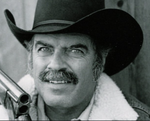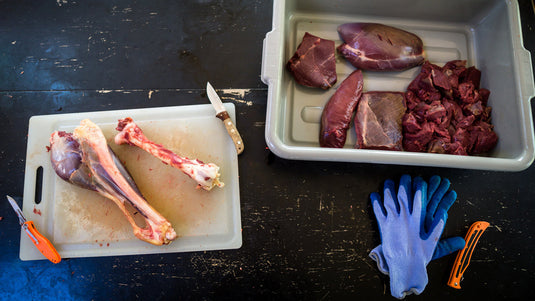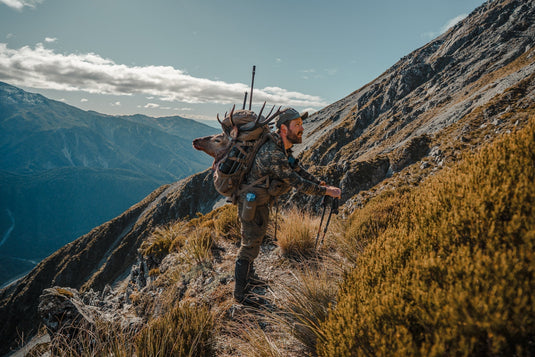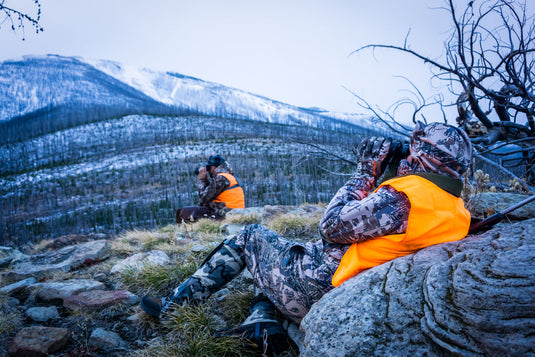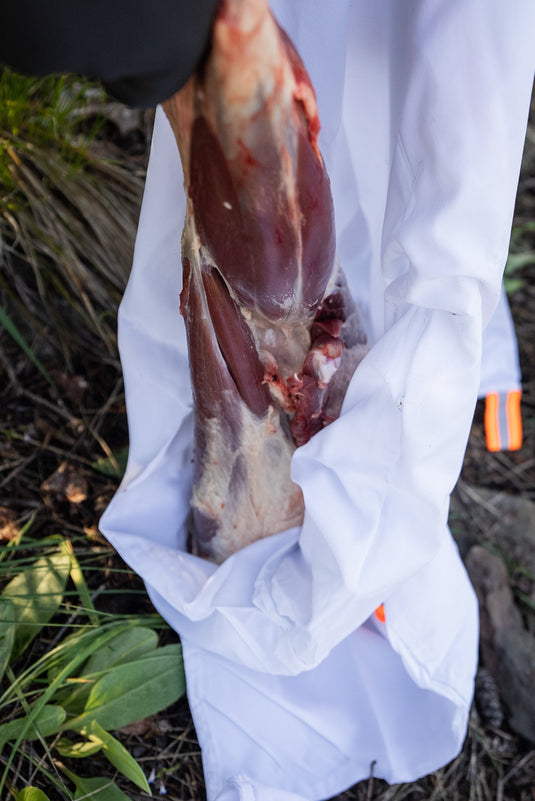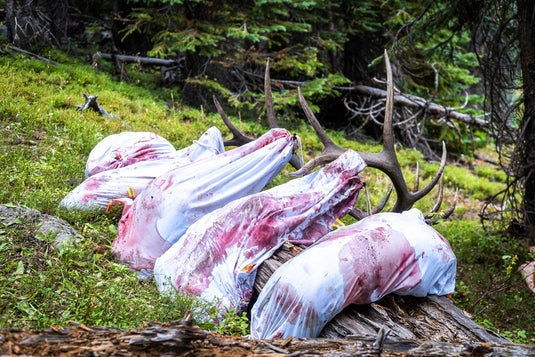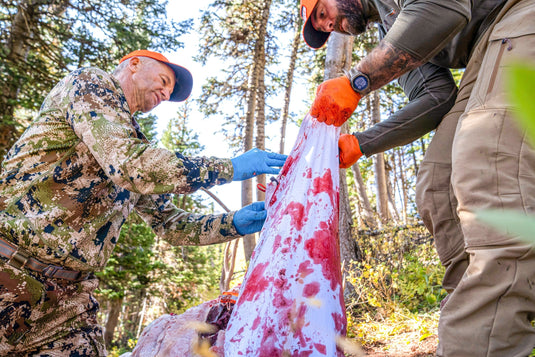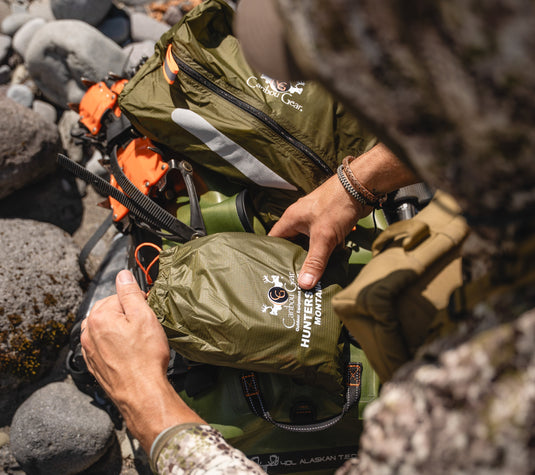Chris Queen was enjoying an elk hunt in northwest Wyoming. He was a game warden and was taking a well-deserved break from his hectic schedule in the fall. Out of nowhere a grizzly bear charged. Chris was carrying a rifle as well as bear spray on a belt holster. He shot the bear with his rifle. The bear piled up in a heap and died a few feet away from him.

The news of the attack made national news. Then came the hate mail. People wanted to know why he had to kill the bear. They said he should have used the bear spray.
Pardon me? Obviously these detractors know nothing about a charging grizzly. Did they really expect the warden to drop his firearm and fumble for his bear spray which may or may not have stopped the bear’s charge? The bear was so close that Chris had only 2 or so seconds to unholster the bear spray and use it. An internal investigation was conducted and Chris Queen was completely cleared of any wrongdoing — as he should have been.
The debate between firearms versus bear spray is endless. Few people are on the fence. Most have strong opinions and won’t budge. Fact is, firearms have worked in some instances and have not in some instances. Same with bear spray. There are many testimonials that address the successful outcome of each, and there are confirmed stories where neither of them worked. By the way, this blog concerns mostly grizzlies but spray is a good idea for defense in the event of a black bear or mountain lion attack as well.
I’m of the opinion that if bear spray never worked, or worked poorly, it would no longer be on the market. Furthermore, forestry and wildlife agencies are enthusiastic about advising the public to carry bear spray. Some agencies require employees to carry bear spray in the field.

In my hometown of Cody, Wyoming, the Game and Fish Department annually gives out 100 cans of free bear spray to the public. It’s on a first come-first served basis. At the give-away, state G & F officials demonstrate how quickly a bear can charge and what it takes to discharge the spray. A wooden bear, almost life size, is placed on two rails. The “victim” stands at the end of the rails 30 feet away, looking in the opposite direction. A warden next to the bear sends it down the track. At the same time a warden next to the victim shouts, “BEAR” and the victim quickly turns around and tries to spray the bear. (The canister is filled with water). This demo seldom goes smoothly, even though the victim is grasping the canister in his hand when he spins around to spray the bear. In real life the canister is usually worn on a belt or a chest holster where it takes more time to retrieve and activate the trigger. It takes 3 seconds or less for the bear to travel the 30 feet to the victim which means the victim has to move swiftly. This demo shows the speed required to spray the bear, but the victim is aware of the situation and is ready. In real life when you’re in the woods you’ll be totally surprised if a bear suddenly appears out of nowhere and can be on you in seconds. For this reason it’s advised to test fire your can of spray, but do so when you can spray downwind, and only for a very short burst. You want to conserve as much spray that you can in the canister.
You’re no doubt aware of pepper spray used for defense against humans. It’s often carried in a purse or pocket and comes in a small canister. There’s some confusion because all sprays are called pepper sprays but there’s a world of difference. Both are considered defensive tools designed to temporarily incapacitate a human attacker or wild animal. Bear spray is usually far more potent than pepper spray because its primary targets are large wild animals.
Bear spray is formulated with capsaicin, an active ingredient derived from chili peppers and other ingredients. Pepper spray is usually formulated with oleoresin capsicum which is a synthetic form of capsaicin.
Another difference is the duration of the effects. Bear spray is more potent and has a longer lasting effect than pepper spray. Also, the active ingredients in bear spray can remain in the air for around 90 seconds while only a few seconds for pepper spray. Importantly, bear spray can be deployed a much greater distance — up to 30 or 40 feet, while pepper spray typically reaches out to 8 to 10 feet.
Bear spray attacks the eyes, nose, mouth and respiratory system to the point where a charging grizzly hit by spray is apt to turn and run off. Obviously, considering that wind direction is important, not many of us are able and willing to dope out the wind when a bear is two seconds away from mauling you. Take your chances and shoot.
Very importantly, do NOT carry your bear spray in your backpack or any pack. This might seem to be useless information, but you’d be surprised how many people do exactly that.
I have a writer friend who wanted to experience what it was like to be hit by bear spray. He had a buddy spray him. He said he was immediately debilitated. He fell to the ground with profound pain in his eyes, nose and throat. He had difficulty breathing. It took several minutes before he could see again and breathe normally. Dumb move on his part? Yes, but he now knew that the stuff worked. Before being sprayed he was a serious critic.
Experts advise that you deploy all the spray when a bear is charging. Don’t use short bursts. Most sprays will last 8 or 10 seconds. Hold the can firmly after removing the trigger guard and hold it low so the bear runs into it. Holding it too high may cause it to spray over the bear, rendering it ineffective. If your companion is being mauled, do not hesitate to spray him and the bear if you have to. Your buddy will hopefully recover from the mauling and you’ll save his life. Being hit and distressed by the spray is a tiny price to pay for running the bear off.

Sprays have interesting histories. One of the best known is an incident experienced by Mark Methany who was attacked by a grizzly in 1992 while bowhunting for elk in Montana with his buddy, Dr. Fred Bohnson. The grizzly charged and began mauling Mark. His buddy reacted immediately by spraying the attacking bear with a very small 4 ounce can of pepper spray. The bear ran off. Fortunately, the doctor got Mark out of the woods into the emergency room without further incident. Mark suffered extensive bites, lacerations to the head and neck, superficial body lacerations to the right arm, and also to the chest. He stayed conscious but lost approximately one unit of blood. Mark’s wounds would have been much worse if not fatal if his hunting partner had not sprayed the bear. Mark believed he was extremely lucky and realized that running out of pepper spray, as had the can the doctor used, could’ve been a big problem. He thought that a better product and education were needed and would never recommend using a pepper spray made for humans against a bear. He went on to develop UDAP spray from his experience. Mark’s mauling changed his life since founding the spray. He has been a relentless bear deterrent advocate. His goal from the start was not just to sell spray, but also to help educate the public about the causes, prevention, and realities of bear attacks and how to successfully defend yourself against them.
As I mentioned, many forestry and wildlife agencies require their employees to carry spray in the field. They have no choice — it’s mandatory. There are countless advocates for bear spray who have harrowing stories to tell about bear attacks that were prevented because of bear spray or attacks that were actively in progress and the bear spray ran them off.
Carrying bear spray is a personal choice. If you’re in country inhabited by grizzlies, black bears or lions you might consider carrying it. On the other hand you might prefer the option of carrying a handgun. Either way, when you’re in prime grizzly country you’ll feel far more comfortable when you’re carrying something to defend yourself. A branch or rock doesn’t work.

The news of the attack made national news. Then came the hate mail. People wanted to know why he had to kill the bear. They said he should have used the bear spray.
Pardon me? Obviously these detractors know nothing about a charging grizzly. Did they really expect the warden to drop his firearm and fumble for his bear spray which may or may not have stopped the bear’s charge? The bear was so close that Chris had only 2 or so seconds to unholster the bear spray and use it. An internal investigation was conducted and Chris Queen was completely cleared of any wrongdoing — as he should have been.
The debate between firearms versus bear spray is endless. Few people are on the fence. Most have strong opinions and won’t budge. Fact is, firearms have worked in some instances and have not in some instances. Same with bear spray. There are many testimonials that address the successful outcome of each, and there are confirmed stories where neither of them worked. By the way, this blog concerns mostly grizzlies but spray is a good idea for defense in the event of a black bear or mountain lion attack as well.
I’m of the opinion that if bear spray never worked, or worked poorly, it would no longer be on the market. Furthermore, forestry and wildlife agencies are enthusiastic about advising the public to carry bear spray. Some agencies require employees to carry bear spray in the field.

In my hometown of Cody, Wyoming, the Game and Fish Department annually gives out 100 cans of free bear spray to the public. It’s on a first come-first served basis. At the give-away, state G & F officials demonstrate how quickly a bear can charge and what it takes to discharge the spray. A wooden bear, almost life size, is placed on two rails. The “victim” stands at the end of the rails 30 feet away, looking in the opposite direction. A warden next to the bear sends it down the track. At the same time a warden next to the victim shouts, “BEAR” and the victim quickly turns around and tries to spray the bear. (The canister is filled with water). This demo seldom goes smoothly, even though the victim is grasping the canister in his hand when he spins around to spray the bear. In real life the canister is usually worn on a belt or a chest holster where it takes more time to retrieve and activate the trigger. It takes 3 seconds or less for the bear to travel the 30 feet to the victim which means the victim has to move swiftly. This demo shows the speed required to spray the bear, but the victim is aware of the situation and is ready. In real life when you’re in the woods you’ll be totally surprised if a bear suddenly appears out of nowhere and can be on you in seconds. For this reason it’s advised to test fire your can of spray, but do so when you can spray downwind, and only for a very short burst. You want to conserve as much spray that you can in the canister.
You’re no doubt aware of pepper spray used for defense against humans. It’s often carried in a purse or pocket and comes in a small canister. There’s some confusion because all sprays are called pepper sprays but there’s a world of difference. Both are considered defensive tools designed to temporarily incapacitate a human attacker or wild animal. Bear spray is usually far more potent than pepper spray because its primary targets are large wild animals.
Bear spray is formulated with capsaicin, an active ingredient derived from chili peppers and other ingredients. Pepper spray is usually formulated with oleoresin capsicum which is a synthetic form of capsaicin.
Another difference is the duration of the effects. Bear spray is more potent and has a longer lasting effect than pepper spray. Also, the active ingredients in bear spray can remain in the air for around 90 seconds while only a few seconds for pepper spray. Importantly, bear spray can be deployed a much greater distance — up to 30 or 40 feet, while pepper spray typically reaches out to 8 to 10 feet.
Bear spray attacks the eyes, nose, mouth and respiratory system to the point where a charging grizzly hit by spray is apt to turn and run off. Obviously, considering that wind direction is important, not many of us are able and willing to dope out the wind when a bear is two seconds away from mauling you. Take your chances and shoot.
Very importantly, do NOT carry your bear spray in your backpack or any pack. This might seem to be useless information, but you’d be surprised how many people do exactly that.
I have a writer friend who wanted to experience what it was like to be hit by bear spray. He had a buddy spray him. He said he was immediately debilitated. He fell to the ground with profound pain in his eyes, nose and throat. He had difficulty breathing. It took several minutes before he could see again and breathe normally. Dumb move on his part? Yes, but he now knew that the stuff worked. Before being sprayed he was a serious critic.
Experts advise that you deploy all the spray when a bear is charging. Don’t use short bursts. Most sprays will last 8 or 10 seconds. Hold the can firmly after removing the trigger guard and hold it low so the bear runs into it. Holding it too high may cause it to spray over the bear, rendering it ineffective. If your companion is being mauled, do not hesitate to spray him and the bear if you have to. Your buddy will hopefully recover from the mauling and you’ll save his life. Being hit and distressed by the spray is a tiny price to pay for running the bear off.

Sprays have interesting histories. One of the best known is an incident experienced by Mark Methany who was attacked by a grizzly in 1992 while bowhunting for elk in Montana with his buddy, Dr. Fred Bohnson. The grizzly charged and began mauling Mark. His buddy reacted immediately by spraying the attacking bear with a very small 4 ounce can of pepper spray. The bear ran off. Fortunately, the doctor got Mark out of the woods into the emergency room without further incident. Mark suffered extensive bites, lacerations to the head and neck, superficial body lacerations to the right arm, and also to the chest. He stayed conscious but lost approximately one unit of blood. Mark’s wounds would have been much worse if not fatal if his hunting partner had not sprayed the bear. Mark believed he was extremely lucky and realized that running out of pepper spray, as had the can the doctor used, could’ve been a big problem. He thought that a better product and education were needed and would never recommend using a pepper spray made for humans against a bear. He went on to develop UDAP spray from his experience. Mark’s mauling changed his life since founding the spray. He has been a relentless bear deterrent advocate. His goal from the start was not just to sell spray, but also to help educate the public about the causes, prevention, and realities of bear attacks and how to successfully defend yourself against them.
As I mentioned, many forestry and wildlife agencies require their employees to carry spray in the field. They have no choice — it’s mandatory. There are countless advocates for bear spray who have harrowing stories to tell about bear attacks that were prevented because of bear spray or attacks that were actively in progress and the bear spray ran them off.
Carrying bear spray is a personal choice. If you’re in country inhabited by grizzlies, black bears or lions you might consider carrying it. On the other hand you might prefer the option of carrying a handgun. Either way, when you’re in prime grizzly country you’ll feel far more comfortable when you’re carrying something to defend yourself. A branch or rock doesn’t work.


